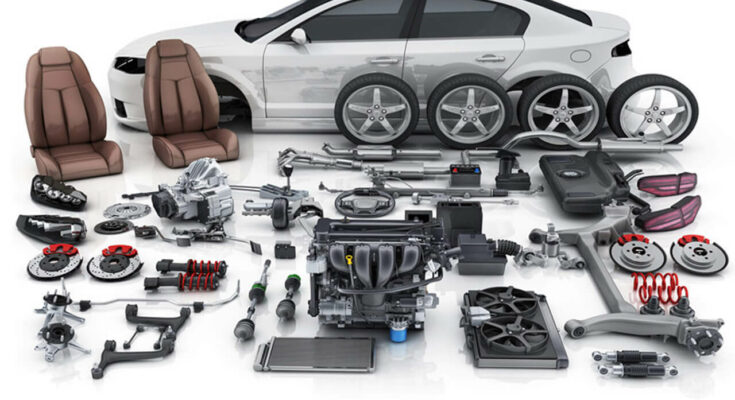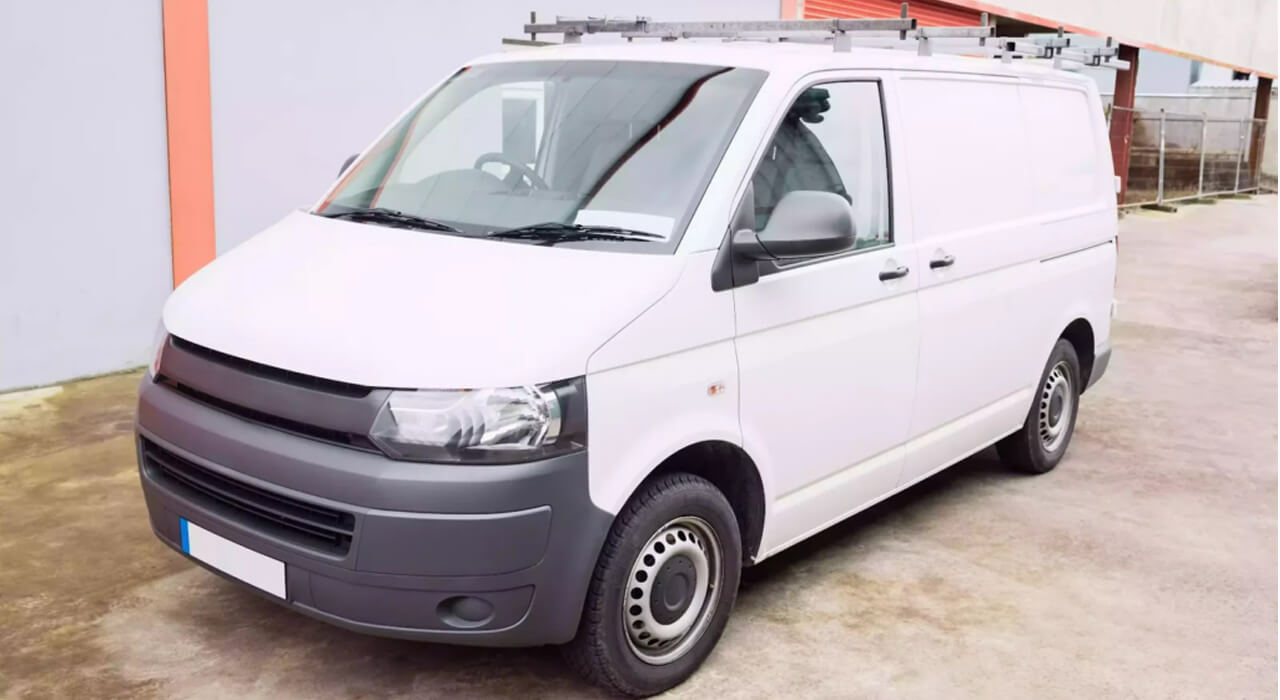The manufacturing landscape has undergone a remarkable transformation over the years, transitioning from traditional methods to high-tech processes. CNC machining has emerged as a frontrunner in this evolution, offering unparalleled accuracy and consistency. At the heart of CNC machining are its intricate parts, meticulously designed to work in unison and bring digital designs to life.
CNC parts are the backbone of modern manufacturing, offering unparalleled precision and repeatability. These parts play a pivotal role in the seamless operation of CNC machines, ensuring the translation of digital designs into tangible products with utmost accuracy. From spindle assemblies and ball screws to servo motors and control panels, each component contributes to the machine’s ability to sculpt materials with finesse.
Layout of computer Numerical control machine.
The layout of a CNC (Computer Numerical Control) machine is a carefully orchestrated arrangement of components designed to optimize precision and efficiency in manufacturing. At its core, the machine bed provides a robust foundation, offering stability to support the intricate operations that follow. It typically consists of a sturdy machine bed providing a stable foundation.
The worktable, where the material is securely held, is the surface where the action happens. The CNC control panel serves as the command hub, letting operators input instructions and monitor the process. Guided by axes, the spindle does the heavy lifting, either holding cutting tools for milling or the workpiece for turning.
- Machine bed
The sturdy foundation of the CNC machine where all other components are mounted. It provides stability and support. Typically made from cast iron or welded steel. Can maintain precise movement during cutting and milling. The robustness of the machine bed contributes to the overall reliability and longevity of the CNC machine.
- Worktable or Work Holding Device
It is the flat surface where you place the material, the stuff you’re going to cut or shape. This table is designed to securely hold the material in place during the machining process, making sure it stays put while the CNC machine does its job. Whether it’s metal, wood, or another material, the worktable ensures that everything stays steady and in the right position, so the machine can precisely cut or shape the material according to the programmed instructions.
Also Check: 7 Best Carburetors for 350 Chevy in 2023 – 2 Barrel, 4 Barrel
- CNC Control Panel
A user interface for programming and controlling the CNC machine. Operators input commands, set parameters, and monitor the machining process from this panel. It’s where the magic starts. Operators use this panel to tell the machine what to do. They input instructions, set the parameters, and keep an eye on how things are going. It’s like the brains of the operation. The CNC control panel makes sure the machine follows the right steps and creates the part or object you want.
- Axis Movement Mechanism
CNC machines typically have three or more axes of movement (X, Y, Z, and sometimes additional rotary axes). Each axis is controlled by motors and guided by rails or screws.
- Coolant system
To dissipate heat generated during machining and to lubricate the cutting tools, CNC machines often have a coolant system.
helps keep things cool and smooth during the action. When the CNC machine is hard at work cutting or shaping materials, it can get pretty hot, like a superhero battling through a tough mission. That’s where the coolant system steps in. It’s like a refreshing spray of water, but smarter. It cools down the tools and the material being worked on, making sure everything stays at the right temperature. Plus, it helps wash away any tiny bits and pieces (like superhero debris) created during the process, keeping the workspace clean.
Suggestion: How To Clean A Cold Air Intake Filter? – Step By Step Expert Guide
- Chip Conveyor
When the CNC machine is cutting or shaping materials, it generates small bits of material called chips. Now, you don’t want these chips cluttering up the workspace. That’s where the chip conveyor comes in. It’s like a conveyor belt that collects and carries away these chips, making sure the work area stays tidy .
- Enclosures:
Many CNC machines have enclosures or protective covers to ensure operator safety and contain any debris or coolant. It’s like the force field that keeps everything safe and contained. These enclosures are there to make sure that, while the CNC machine is busy doing its precision work, nothing unexpected interferes. They provide a cover, kind of like a superhero’s cape, making sure debris or coolant doesn’t go flying all over the place.
- Emergency Stop Button:
The emergency stop button in a CNC (Computer Numerical Control) machine is like a superhero’s “stop everything” command. If something unexpected or unsafe happens, you press this button, and it’s an immediate pause – a safety superhero swooping in. It’s the quickest way to halt all machine operations, ensuring that everyone and everything stays safe.
- Control Computer:
The computer processes the CNC program and sends commands to the machine’s motors and actuators. It is like the brain that tells the machine what to do. It’s where you store the instructions, the digital recipe, for creating your part. Imagine it as the conductor leading an orchestra – it guides the CNC machine through every step of the performance.
The control computer processes the coded instructions, known as G-code, and sends signals to the machine’s motors, making sure it moves precisely to craft your design. It’s the behind-the-scenes maestro, turning your ideas into reality with just a few clicks and commands.
Suggestion: Top 9 SUVs With Best Gas Mileage
- Display Screen:
Provides information about the machining process, tool status, and any potential errors.
The display screen on a CNC (Computer Numerical Control) machine is like its face – it shows you what’s going on and lets you give commands. It’s similar to the screen on your phone or TV, but for the CNC machine. This screen displays important information about the machining process, like which step it’s on and if everything is going well.
It’s also where you might see any issues that need attention. You can think of it as your window into the machine’s world. It’s user-friendly, allowing operators to keep an eye on things and make sure everything is running smoothly while the CNC machine brings your designs to life.
How CNC Parts Work Together?
Imagine a CNC machine as a ballet dancer, gracefully executing each move with precision. Similarly, CNC parts work in harmony to transform a digital blueprint into a tangible product. The controller unit receives instructions, signaling the drive system to move the tool along the programmed path. The tool, guided by the chosen tooling, meticulously sculpts the material on the worktable. This dance of precision is repeated with consistency, producing identical parts with minimal error.
The quality of CNC (Computer Numerical Control) parts is a critical aspect that directly influences the overall performance and reliability of manufactured products. Several factors contribute to ensuring high-quality CNC parts.
- Material Selection: The choice of materials for CNC parts is crucial in determining their quality. High-quality CNC parts are crafted from materials that match the specific requirements of the intended application. Whether it’s metals, plastics, or composites, the right material selection contributes to the durability and performance of the final product.
- Surface Finish: a surface finish of CNC parts is a visual and tactile indicator of quality. Well-finished surfaces demonstrate attention to detail and can be crucial in applications where aesthetics matter. Additionally, a smooth surface finish can contribute to improved functionality and longevity of the part.
- Consistency in Production: Quality CNC parts are consistently produced with minimal variation. CNC machining’s ability to replicate designs with high accuracy ensures that each part in a production run is virtually identical. This consistency is essential in industries where uniformity is a prerequisite for product performance and assembly.
- Adherence to Design Specifications:
High-quality CNC parts adhere closely to the design specifications provided in the CAD (Computer-Aided Design) files. Any deviation from the intended design can result in functional issues or product failure. Quality control measures throughout the manufacturing process help maintain strict adherence to design specifications.
Applications of CNC manufacturing
In this exploration, we’ll unravel the diverse industrial applications of CNC parts, showcasing their transformative impact on the way products are designed, developed, and delivered.
- Automotive Manufacturing: Shaping the Future of Mobility. The automotive industry has embraced CNC technology to enhance the precision and efficiency of component manufacturing. CNC parts are utilized in the production of engine components, transmission parts, and intricate elements of vehicle interiors.
- Medical Device Production: Precision for Patient Well-being In the medical field, where precision is a matter of life and death, CNC parts are instrumental in the production of medical devices. From orthopedic implants to intricate surgical instruments, CNC machining ensures the highest level of accuracy in the manufacturing process.
- Electronics Manufacturing: Enabling Technological Advancements The electronics industry relies heavily on CNC parts for the production of intricate components such as circuit boards, connectors, and housings. The miniaturization of electronic devices demands precision at a microscopic level, a feat achievable through CNC machining.
- Energy Sector: Powering Precision Production In the energy sector, CNC parts are employed in the manufacturing of components for power generation and distribution. From turbine blades in power plants to components for renewable energy systems, CNC machining ensures the reliability and efficiency of energy infrastructure.
CNC part Manufacturing
CNC (Computer Numerical Control) parts manufacturing takes place in various locations globally, and the choice of manufacturing location depends on factors such as cost, expertise, proximity to raw materials, and the specific needs of the industry. Here are common locations where CNC parts manufacturing occurs:
- China: China has emerged as a major hub for CNC parts manufacturing due to its large industrial base, skilled labor force, and cost advantages. Many companies, both domestic and international, source CNC parts from manufacturers in China.
- United States: The U.S. is home to a significant number of CNC machining facilities, particularly in industries such as aerospace, automotive, and medical devices. The focus on innovation, technology, and stringent quality standards contributes to the popularity of CNC manufacturing in the United States.
- Germany: Known for its precision engineering and advanced manufacturing capabilities, Germany is a prominent player in CNC parts manufacturing, especially in industries that demand high-quality and precise components.
- Japan: With its strong emphasis on technological advancements and quality control, is a key player in CNC manufacturing. Japanese companies are often at the forefront of producing high-precision CNC components.
It’s important to note that the choice of manufacturing location depends on the specific requirements of the industry and the preferences of the companies involved. Factors such as transportation costs, lead times, and the complexity of the CNC parts also influence the decision-making process for manufacturers.
The Future of CNC Parts
As we delve deeper into the era of Industry 4.0, the role of CNC parts in manufacturing is set to become even more prominent. Continuous innovation in materials, software, and hardware ensures that CNC machining remains at the forefront of precision manufacturing. Understanding the intricacies of CNC parts not only demystifies the technology but also fosters an appreciation for the precision and efficiency that define modern manufacturing processes. In a world where quality and speed are paramount, CNC parts stand as the unsung heroes, shaping the products that define our daily lives.
The industrial usage of CNC parts has ushered in a renaissance in manufacturing, transforming traditional processes into streamlined, high-precision operations. Across diverse industries, CNC technology has become synonymous with reliability, efficiency, and innovation. As we look to the future, the continued evolution of CNC parts promises to push the boundaries of what is possible, shaping industries and contributing to the development of cutting-edge technologies that define the modern world.
FAQs
- How do CNC parts work?
CNC machines follow digital instructions from computer programs. The machine’s tools move precisely, cutting, shaping, or drilling materials to create the desired part. It’s like a robot craftsman controlled by a computer.
- Why are CNC parts important?
CNC parts ensure high precision and consistency in manufacturing. They help create complex and accurate pieces, making products reliable and efficient. Industries rely on them for quality and efficiency.
- Who operates CNC machines?
Skilled operators run CNC machines. They use computer programs to set up the machine, load materials, and monitor the process. Their expertise ensures the machine produces high-quality parts.
- Can CNC parts be customized?
Yes, CNC parts can be highly customized. Designers create digital models (CAD files), and CNC machines follow these designs precisely. This flexibility makes them suitable for a wide range of products.
In summary, the advancement of technology has shaped the journey of CNC machine parts, showcasing human creativity. The constant improvement reflects a dedication to pushing limits, prioritising precision, and boosting industrial progress. In the dynamic world of manufacturing, CNC machine parts tell a story of continuous pursuit — a quest for perfection, speed, and endless possibilities.
Through effective teamwork, they turn digital designs into actual products, influencing industries worldwide. These components are crucial for providing exceptional accuracy, improving product quality, and speeding up production.

















